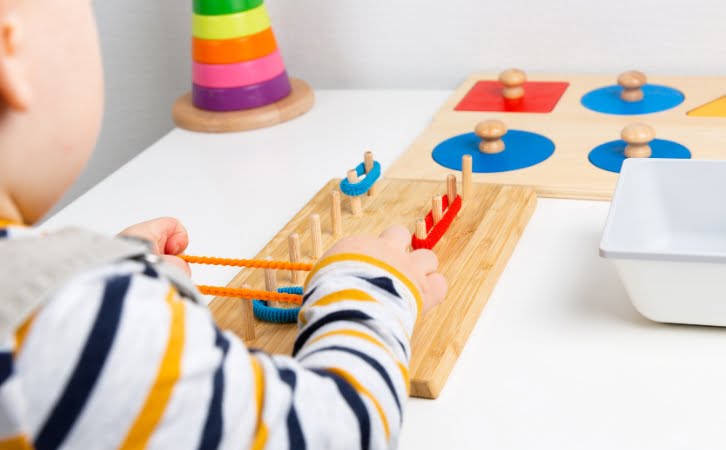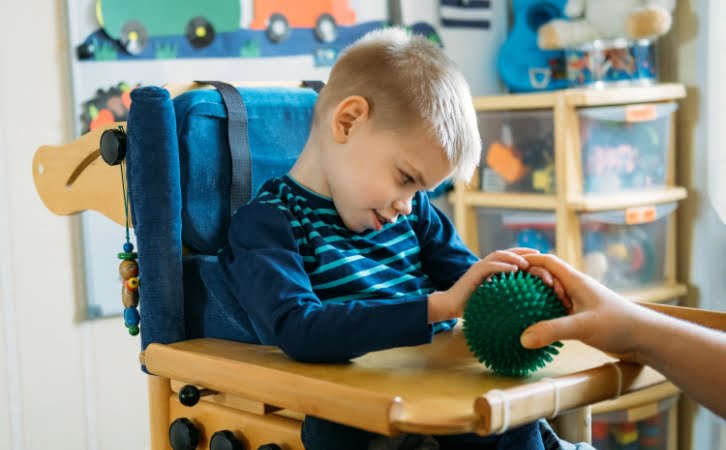Sensory play is one of the most important aspects of a preschooler’s development. They learn about their surroundings through sensory activities and develop their cognitive, language, and motor skills.
In this article, we’ll explore 10 fun sensory activities that your child will love. These activities will help them learn and grow while keeping them engaged and entertained. 10 Sensory Activities for Preschoolers
Read Here: Preschool Activities for Indoor Playtime
What is Sensory Play?
Sensory play is a wonderful way for children to engage with their surroundings and learn about their environment. But what exactly is sensory play? It is any activity that stimulates a child’s senses, such as touch, taste, smell, sight, and hearing. Some examples of sensory play include playing with sand, water, or play dough, feeling different textures with their hands, smelling different scents, and listening to music or sounds.
When children engage in sensory play, it helps to develop their cognitive, social, emotional, and physical skills. According to research, sensory play “promotes the growth of neural pathways” and “supports language development, cognitive growth, fine and gross motor skills, problem-solving skills, and social interaction”.
💡 Key Takeaway: Sensory play is crucial for a child’s development and can stimulate their cognitive, social, emotional, and physical skills. These ten sensory activities, including kinetic sand play, water play, nature walks, and sensory paths, can provide a range of stimulating experiences for preschoolers.

Read Here: How To Encourage Creativity In Kids?
Benefits of Sensory Play
Sensory play is fun and essential for a preschooler’s development. Here are some benefits of sensory play that parents and caregivers should know:
- Enhances cognitive development: When children engage in sensory activities, they use their five senses to explore and understand the world around them. This helps them to learn and develop cognitive skills such as problem-solving, critical thinking, and decision-making.
- Develops fine and gross motor skills: Sensory play involves manipulating objects, pouring, scooping, and exploring different textures, which helps to improve hand-eye coordination and develop fine and gross motor skills.
- Enhances language development: Children learn new concepts, words, and language skills as they describe, compare, and explain what they are experiencing through their sensory play.
- Boosts social skills: Sensory play provides opportunities for children to play and interact with others, helping to develop social skills like sharing, cooperating, and following rules.
- Reduces stress and anxiety: Sensory play can be calming and relaxing for children, helping to reduce stress and anxiety.
- Fosters creativity and imagination: Sensory play encourages curiosity and creativity, fostering children’s imagination and providing opportunities for open-ended play.
💡 Key Takeaway: Sensory play has numerous benefits that contribute to a child’s overall development. Encouraging your preschooler to engage in sensory activities will help them develop their cognitive, motor, language, social, and emotional skills while also fostering their creativity and imagination.

Read Here: Why Is Music Education Important For Kids?
10 Sensory Activities for Preschoolers
Introducing your preschooler to sensory activities is a great way to help them learn about their surroundings, stimulate their senses, and encourage creativity and exploration. Here are 10 sensory activities that you can try at home with your preschooler:
1. Sensory Walk
Sensory Walks are a perfect way for preschoolers to use their feet to explore their sense of touch. By creating designated areas in the hallway or outside with different textured materials, children can experience a variety of textures that promote vocabulary development and gross motor skills. It also encourages outdoor play and movement for healthier brain and body development.
2. Homemade Playdough
Homemade playdough is a great sensory activity for preschoolers. Not only is it easy and affordable to make, but it also engages kids in a fun and creative way. Children can improve their fine motor skills, hand-eye coordination, and sensory processing abilities by manipulating the dough. Plus, they use their imagination to mold and shape different objects, fostering their cognitive development.
3. Ice cube painting
Ice cube painting is a fun and unique sensory activity that preschoolers will love. With just a few drops of food coloring, water, and a freezer, you can create colorful ice cubes that turn into mini-masterpieces on white paper or paper towels. This activity is excellent for warm sunny days and is completely taste-safe too! So, let your little ones explore, watch the colors melt, and create beautiful artwork.
4. Water play
Water play is a classic activity for preschoolers, with many fun variations. Set up a simple water table or add excitement with foamy water, ice cubes, or floating objects. Water play is great for developing fine motor skills, sensory exploration, and imaginative play. Plus, it’s a refreshing way to cool off on hot days!
5. Sensory Bottles
Sensory bottles are a wonderful DIY activity for parents and educators to create with preschoolers. These mesmerizing beauties offer a unique element for discovery and exploration while calming overwhelmed or anxious children. With over 21 different ideas, you can easily find a sensory bottle that fits your child’s interests and needs. Plus, they offer safe and no-mess sensory play for babies and toddlers.
6. Sand and Kinetic Sand
Sand and kinetic sand are excellent materials for sensory activities for preschoolers. Playing with sand can stimulate their sense of touch and help them develop fine motor skills. Kinetic sand, in particular, is moldable and never dries out, providing endless opportunities for creativity and imagination. Plus, it’s easy to clean up, making it a hassle-free option for parents and educators.
7. Balloon painting
Balloon painting is an excellent sensory activity for preschoolers, allowing them to explore their creativity while engaging their senses. Children can use their hands to manipulate the paint and balloons, creating patterns and prints on paper. This activity is fun and provides an opportunity for children to build self-esteem and a sense of satisfaction. Mixing paints and creating new colors fosters exploration and experimentation while making connections with the world through art.
8. Obstacle course
The obstacle course is a fun way for preschoolers to develop their gross motor skills. You can create a simple obstacle course using household items or go to a playground for added excitement. Obstacle courses challenge children to climb, jump and move their bodies differently, helping them develop coordination and strength.
9. Sensory Bin
Sensory Bins are one of preschoolers’ most versatile and entertaining sensory activities. These bins can be filled with various materials, such as rice, water beads, or sand, and can be themed according to your child’s interests.
One great way to utilize sensory bins is to include different tools, such as scoops and funnels, to help your child engage their fine motor skills while exploring different textures and materials.
According to experts, sensory bins provide sensory input that helps children learn and develop skills such as language, social skills, problem-solving, and creativity. As a bonus, they are also an excellent activity for independent play.
To make a sensory bin, choose your filler material, add some themed objects or toys, and give your child some tools to explore. Here are a few ideas to get started:
- Ocean-themed sensory bin with blue-colored rice, toy sea creatures, and seashells
- Construction-themed sensory bin with kinetic sand, toy trucks, and wooden blocks
- Nature-themed sensory bin with birdseed, flowers, and small toy animals
10. Making Homemade Musical Instruments
Making homemade musical instruments is a fun and creative activity for preschoolers. There are endless possibilities, from simple instruments like tambourines and shakers to more complex ones like xylophones and flutes. Not only does it provide an opportunity for kids to explore music and rhythm, but it also supports their fine motor skills and encourages their imagination.
Conclusion
Overall, sensory play is an important part of a preschooler’s development. These activities not only engage their senses but also help them to learn about their surroundings. By providing opportunities for exploration and creativity, sensory play can help children to develop their motor skills, social skills, and cognitive abilities. Try incorporating these 10 sensory activities into your child’s daily routine, and watch as they grow and learn through play.
💡 Key Takeaway: Sensory play is crucial for preschoolers’ development and can help them develop their motor, social, and cognitive abilities.


